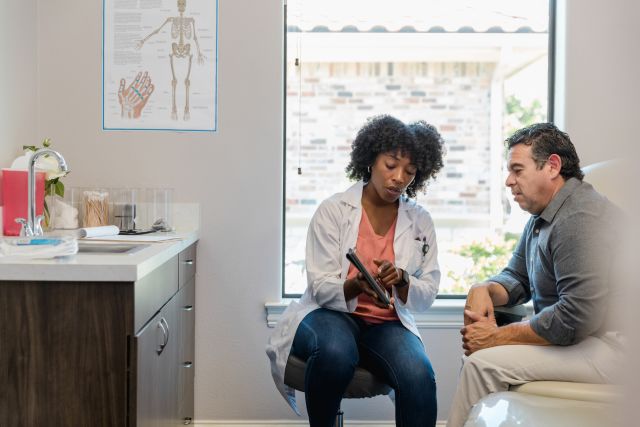Updated on June 12, 2023.
If there’s one thing you remember from high school biology, it’s probably this: Mitochondria are the powerhouses of the cell. That’s why problems with mitochondria can wreak havoc on the body. Mitochondrial disease refers to any condition where mitochondria cannot make energy properly, producing a very wide range of symptoms. In the United States, mitochondrial disease affects 1 in every 4,000 people, and it’s estimated that it affects 1 in every 5,000 people globally.
You may think you don’t know anyone with a mitochondrial disease, but chances are you’ve heard of one: Charles Darwin, a major contributor to the theory of evolution as we understand it today. Darwin faced many obstacles on his quest in evolutionary biology, including poor health. He would often have symptoms like nausea, vomiting, and agonizing stomach pain. He would also experience headaches, heart palpitations, muscle twitching, and eczema, among other issues.
Researchers think Darwin may have had a mitochondrial disease called MELAS, which is an acronym for mitochondrial encephalopathy, lactic acidosis, and stroke-like episodes. When his DNA was examined, researchers found that he had inherited a mitochondrial DNA mutation, further supporting the mitochondrial disease theory.
Here's what else you should know about mitochondrial disease.
What is mitochondrial disease?
Really, the question is what are mitochondrial diseases? They’re caused by mutations in DNA that can either be inherited from both parents or arise during or soon after conception. Some disorders only affect one organ, while others can affect groups of organs. They prevent the mitochondria from making enough energy to “feed” the body’s cells. These diseases can be present at birth or develop later in life, and symptoms range widely from seizures to breathing difficulty to poor vision to organ failure.
How is mitochondrial disease diagnosed?
Mitochondrial diseases are difficult to diagnose, especially in children. There are many diseases with many symptoms, and symptoms can vary widely from person to person, even with the same disease. What’s more, various mitochondrial illnesses often mimic other diseases. They are commonly mistaken for autism, amyotrophic lateral sclerosis (ALS, or Lou Gehrig’s disease), muscular dystrophy, and Alzheimer’s disease.
Healthcare providers (HCPs) who suspect mitochondrial disease may use family history, DNA tests, imaging studies (MRI or CT), bloodwork and other labs, and even procedures such as muscle biopsies and electroencephalograms (ECGs), to help confirm a diagnosis.
How is it treated?
Mitochondrial diseases have no cure, but recent breakthroughs have made the symptoms more manageable. Specifically, symptoms such as seizures or attention problems can be managed. Treatments are as varied as the numerous conditions, and some treatments that work well for one disease may not work at all for another.
Adding supplements to the diet is one method that some HCPs use to manage mitochondrial diseases. Some of these supplements include:
- Creatine, which can be used as an alternative energy source
- Antioxidants like vitamin C and vitamin E
- Coenzyme Q10, which helps convert food to energy and improve mitochondrial function
Additionally, simple dietary changes can also help. Studies show that people with mitochondrial disease tend to have protein, calcium, and fluid deficiencies. HCPs are increasingly recommending dietary counseling to construct a nutrition plan to help improve these deficiencies.
There are also some devices approved by the Food & Drug Administration (FDA) that can help with symptoms. The two most promising devices are near-infrared light-emitting diode (NIR-LED) and transcranial direct current stimulation (tDCS). NIR-LED uses low-energy light to increase expression of proteins that help with energy production in the mitochondria. TDCS involves electrodes placed on the head to help treat seizures. This therapy has shown mixed results in studies, being beneficial in one study and making no difference in another.
The simplest intervention of all is perhaps exercise. Getting regular physical activity, particularly cardio (aerobic) exercise, is recommended for people who are able to do it. Cardio has been shown to help increase the number of mitochondria in cells and improve quality of life for people with mitochondrial disease.
Current clinical trials running for mitochondrial disease can be viewed at MitoAction.Org or at the U.S. National Library of Medicine’s Clinical Trial Database, ClinicalTrials.gov. The United Mitochondrial Disease Foundation also provides support, resources, and opportunities to get involved for people with mitochondrial disease.
If you suspect that you may have mitochondrial disease, get in touch with an HCP or specialist who can help you manage your symptoms.







